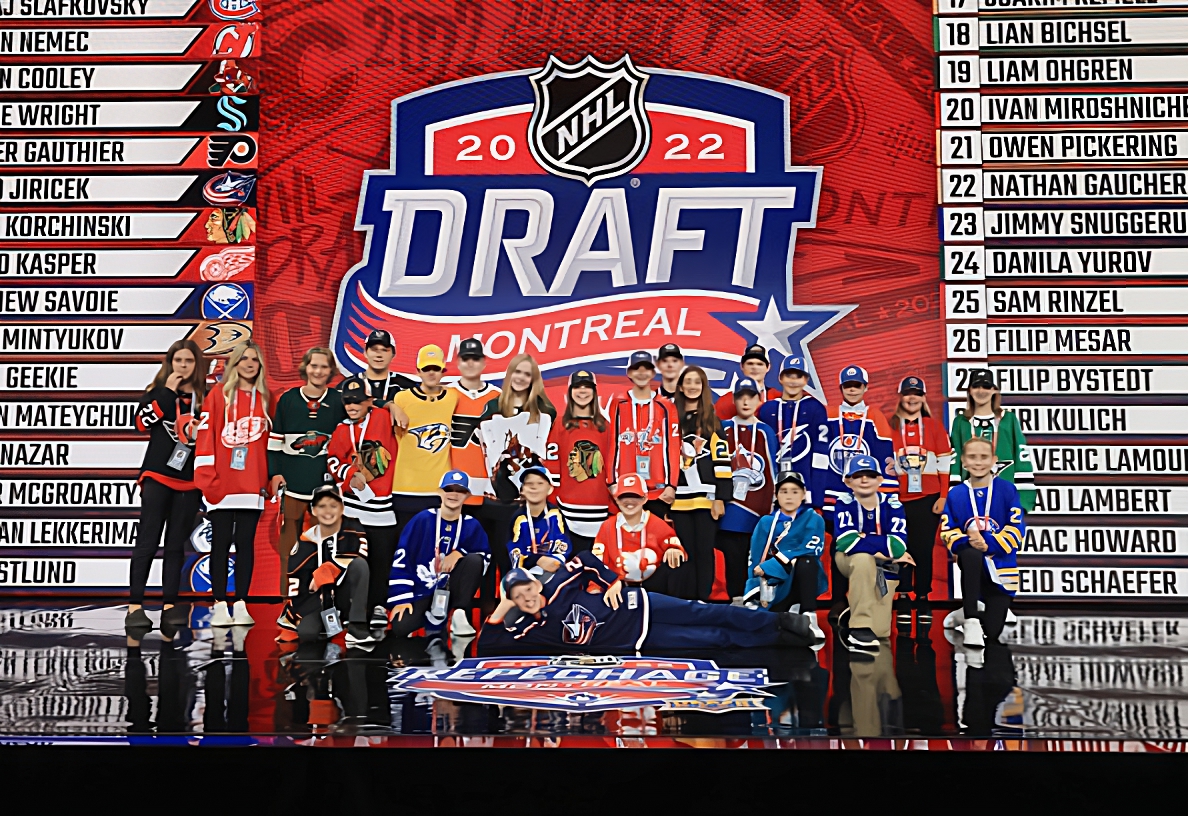Welcome back to Top Shelf Prospects, the column that brings you the next crop of professional hockey players. Each day our LWOS Prospects Writers will bring you a new player profile or topical article in the lead-up to the 2023 NHL Draft. Be sure to bookmark the site, follow Ben Kerr, Kyle Pereira and Frederik Frandson on Twitter, and spread the word for the site that will bring you analytical and critical profiles and scouting reports! Last Word On Hockey Prospects is your new headquarters for everything “NHL Draft”! Today we bring you our Brayden Yager Scouting Report.

The 2023 NHL draft class is a loaded one. From the top with Connor Bedard and Adam Fantilli, it is arguably one of the best classes in recent memory. Add to the fact that there are some intriguing names throughout the projected first round, and it’s clear this draft is also deep. In this piece, we will break down projected first-rounder Brayden Yager.
Brayden Yager Scouting Report
Brayden Yager, born January 3rd, 2005, is an 18-year-old center for the Moose Jaw Warriors of the WHL. Born in Saskatoon, Saskatchewan, Canada, Yager is 6’0” and 165 pounds. Last season, his first full year with the Warriors, he scored 34 goals and 25 assists for 59 points in 63 games. His impressive goal-scoring has continued into this season. So far, he has scored 18 goals and 25 assists for 43 points in 35 games, putting him on track for 35 goals and 49 assists for 84 points across a projected 68-game season.
So far, Yager has been ranked exclusively inside of the top 15 for the 2023 draft. He was ranked as high as fourth by The Hockey News, TSN’s Bob McKenzie, and Recruit Scouting. Other rankings place him fifth (McKeen’s Hockey, Sportsnet), seventh (FC Hockey), eighth (Craig Button), 12th (Smaht Scouting) and 14th (Dobber Prospects, Elite Prospects). This writer has Yager ranked 10th on his unreleased rankings.
Center/Right Wing — shoots Right
Born January 3rd, 2005 — Saskatoon, Saskatchewan
Height 5’11” — Weight 166 lbs [180 cm / 75 kg]
Brayden Yager Deep Dive
Brayden Yager is a goal-scorer, as shown by his stats. But looking deeper, it becomes clearer why that is the case. However, there are still concerns this writer has that could cause Yager to slide down the rankings as the season progresses. What makes Yager a top-10 prospect in a stacked class? What concerns are there that could lead to him sliding down?
Brayden Yager’s Skating
Yager is a good skater overall. Looking at his straight-line speed, one can even say he is a great skater. When he builds up speed and really takes off, few players can truly keep up. However, those moments do not come very often. Yager does not have the best edge work, which impacts his ability to build up speed. Thus, his acceleration is impacted negatively.
The positive that can be seen within that aspect is his mechanics. His knee bend is strong, and he has nice long strides. His ankle flexion is not good, which is the main catalyst for his below-average edges and acceleration. A coach can work that kink out and get him to overcome those deficiencies. His skating should not be a worry once he gets the necessary coaches.
With those deficiencies, however, there can be moments of frustration watching his game. There have been numerous times where Yager fails to complete a turn without losing speed, causing a pass to be a step ahead of him, leading to uncontrolled exits or entries for his team when pushing up ice. It’s also seen in turnovers by him or his teammates. There are times when, if he could stop up and turn a little quicker, he could have won possession back or backchecked more efficiently. Instead, he lost speed out of a turn and ended up a step or two behind the play.
Offensive Abilities
Yager’s offensive abilities are where he shines. It’s where he has built up a reputation good enough to be ranked within most people’s top-10 rankings. Starting with the good, Yager’s shot is just beautiful. On the surface, he has a shot that is accurate and very powerful. He can rip shots snugly into the top corners and find holes within a goalie to place his shots. On a more technical level, he can generate that power and accuracy because of his weight transfer. He pushes off of his back leg and puts his weight right into the shot consistently. He then keeps his stick blade facing the net, which makes him accurate. Great shot, great mechanics, and hits on the smaller details.
Where the concerns arise are his consistency with playmaking and his play away from the puck. There can be shifts where Yager is feeling it, getting to the right spots and being open for teammates. But there are also shifts where he is purely a perimeter player and does not attack the slot with or without the puck. While he can score from anywhere at the WHL level, he needs to learn to attack the higher-danger areas to become an even bigger threat. It’ll also make his shot more translatable to the professional ranks.
Shooting Ability
In three tracked games with Moose Jaw, Yager fired 15 total shots (five per game). Of those shots, eight hit the net (53.33% shot accuracy). At even strength, he had nine shots, with three on net (33.33%). That means that 40% of his shots came on the powerplay, and he was more efficient at shooting on those opportunities. One could argue he isn’t the most accurate shooter, despite what was said earlier. But he actually hit the net on 50% of his high-danger shots (less space, missed shots were blocked) compared to hitting the net on just 33% of his medium-danger or lower shot attempts. That ties back into what was said earlier: he needs to learn to attack high-danger more often, both with and without the puck, and he will be more efficient.
Playmaking Ability
As for his playmaking, he isn’t very involved. Yager does not have a lot of touches relative to most prospects this writer has tracked in the past. For the most part, Yager has good vision and can make good decisions with the puck. But he does not show that, especially at even strength. Yager attempted 29 total passes in the three tracked games, with just three at even strength (10.34%). While he completed all three passes at even strength, two were low-danger passes to the point or the corner for a forward down low. On the power play, he completed 84.62% of his passes, but of those passes, 65% were directed to the low-danger areas.
What The Numbers Tell Us
Yager has a great shot, but in the games tracked, he really didn’t take advantage of it very often. Whether it was his shift-to-shift inconsistency with his off-puck movement or playing too much from the perimeter, it seemed like he held himself back more than anything, unintentionally. Then, in terms of his even-strength play, he seems like a complementary piece.
He does not command the puck, as he doesn’t really touch the puck very often. He relies on teammates more than anything to set him up, as he doesn’t have the best off-puck abilities, as already stated. But he does limit turnovers and makes the smarter plays, especially on the power play. If Yager could increase his intensity with the puck and use his generally strong vision without the puck to find space, he could be even more dangerous. But there are some concerns to be had with the tendencies he showed in these games.
Brayden Yager’s Transitional Abilities
As mentioned earlier, Yager really did not touch the puck much in the tracked games. That was especially evident and concerning when looking at his transitional abilities. When it came to exiting the defensive zone, he was solid. On 20 exit attempts across all strengths, he left the zone with control on 12 (60%). At even strength, he had 12 attempts, with a controlled exit on 11 of them (91.67%). The only caveat is that two of those controlled exits came from him skating it out directly, with the other nine being passes to teammates (16.67% zone exit carry percentage).
The problems come from his zone entry stats. He had 16 zone entry attempts at all strengths and gained the offensive zone with control on just five of them (31.25%). Meanwhile, he failed to enter the offensive zone seven times at all strengths (43.75%). It’s even worse at even strength, with 11 entry attempts and only three controlled entries (27.27%). He failed to enter the zone four times (36.36%).
Diving Deeper Into The Transitional Numbers
When it comes to his transitional stats, there are some things to love and some things not to love at all. Exiting the zone, Yager is very efficient and makes smart plays to move the puck up ice to his teammates. But again, it shows that he is a complementary piece rather than someone who can drive a line. He relies on teammates to do the hard part, skating the puck out. Then, when it comes to entering the offensive zone, not only is he not very involved, but he is not very efficient.
Yager often tries to do too much on his own when entering the zone. Dangling through the legs of a defender or sliding the puck underneath a stick is all fine and dandy when it works consistently, a la Bedard. But he isn’t the most consistent in those areas, thus leading to failed entries. Additionally, he does not put himself in good spots for his teammates. He skates straight towards the offensive blue line, then stops there and waits. His feet are not moving, he isn’t open, and his teammates don’t often get him the puck. When they do, he’s flat-footed and has problems with acceleration for the same reasons mentioned in the skating category, and gets shut down pretty quickly. These things should be coachable, but there should still be some pause for concern.
Yager’s Defensive Zone Play
Defensively, Yager is hit or miss. When he is on his game, he does a good job keeping puck carriers to the outside and away from the high-danger areas of the ice. His stick work is really strong as well. When away from the puck carrier, he does a good job helping cover the low slot, disrupting opposing players by lifting their sticks. However, he can be a bit over-aggressive, chasing the puck sometimes and playing more like a winger. He attacks the point quickly, but that’s not really his role, and he can leave his defenders short-handed below the dots.
When he isn’t on his game defensively, he can be a bit lackadaisical. He is late to cover net-front attackers, doesn’t help keep players in low danger, and can get caught puck-watching. He still looks to cover the wingers’ responsibilities rather than his own as a center, regardless of his defensive zone effort level.
Brayden Yager’s Potential
Yager is a very interesting player to look at. His value lies in his offensive game. When he has the puck, he is a threat to score from anywhere, at any time, regardless of his surroundings. If you give him space, he will score. Yager is smart with the puck and won’t force passes that aren’t there. So, if you remove his space, he’ll find an open teammate quickly. His offensive potential looks to be one of a 20 to 25-goal-scorer and 60-point producer.
However, his play away from the puck leaves a lot to be desired in all three zones. When he has the puck, he struggles to generate a lot in terms of entering the offensive zone and creating plays with his passes. A one-dimensional game with off-puck struggles could lead to some issues transferring to the NHL ranks. That said, his ceiling is likely a top-six goal-scorer with powerplay abilities, but his floor is very low.
An NHL comparable, based on style alone, not skill or projection, is that of Mike Hoffman.
Highlights
Main Photo:
Embed from Getty Images






